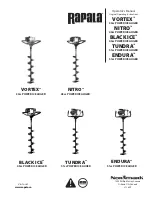
-73-
GLOSSARY
GLOSSARY
FITNESS/PHYSIOLOGY TERMS
Active Recovery —
It’s important to perform active recovery after a sprint instead of resting
immediately. Toxins accumulate in your muscles after exercise, but these waste products are drastically
reduced if you perform some type of cool-down activity after your workout. Walking, pedaling or light
jogging for 10 to 15 minutes will greatly improve the breakdown of metabolites and reduce unwanted
stiffness and soreness.
Aerobic Exercise —
Aerobic means “with oxygen.” Walking, jogging, stair climbing, swimming and
jumping rope are examples of this exercise.
Anaerobic Threshold —
Also known as lactate threshold. Anaerobic threshold is achieved when your
muscles burn and you start breathing heavily during exercise. This is the point where the increasing energy
demands of your exercise cannot be met by the use of oxygen and an oxygen debt begins to accumulate.
Basal Metabolic Rate (BMR) —
Amount of calories your body burns when resting. Your BMR caloric
burn breaks down as 60% from functioning organs, 25% from muscles, 10% from bones and 5% from
fat. BMR is usually expressed in calories per hour per square meter of body surface.
Heart Rate Training —
Monitoring your heart rate while you perform anaerobic and aerobic training
with the purpose of reaching certain heart rate levels.
Lactic Acid —
Lactic acid is one of the byproducts of muscle metabolism. It manifests as the burning
sensation felt when you exercise hard.
Maximal Oxygen Consumption (VO2 max) —
A very important measure of your potential to become
an elite endurance athlete. A high VO2 max means that your body processes and uses oxygen very
efficiently. The maximum amount of oxygen that can be taken in and utilized in one minute is the
formula for discovering your VO2 max. VO2 max will vary as the oxygen supplied to muscle in use
depends on how much you weigh and how much muscle you have. That is why VO2 max is expressed as
milliliters of oxygen per kilogram of body weight per minute. It reflects the upper limit of your aerobic
metabolism and is limited by the amount of oxygen that can be delivered to your working muscle cells.
VO2 max is formulated as a product of your maximal cardiac output and maximal arterial-venous
oxygen difference at the capillary-cell interface.
Maximum Heart Rate (Max HR) —
Your maximum heart rate is the highest heart rate that you can
achieve while exercising.
Oxygen Consumption (VO2) —
Oxygen uptake, VO2, is the total amount of oxygen consumed by your
cells over a given period of time (usually one minute) to meet your energy needs.
Oxygen Debt —
When the oxygen you are consuming during exercise recovery is greater than the
amount you would take in at rest.
Periodization —
A training program segmented into weeks (micro-cycle), months (meso-cycle) and
years (macro-cycle). Each training cycle helps set short-term goals, which will ultimately help reach
long-term goals.








































